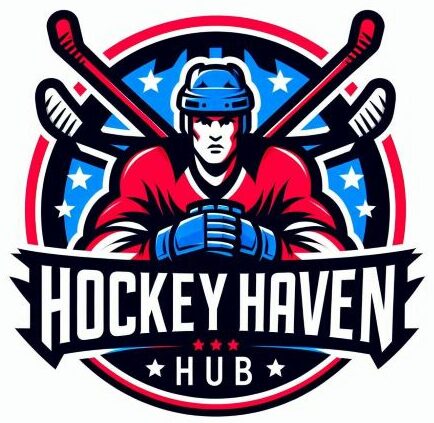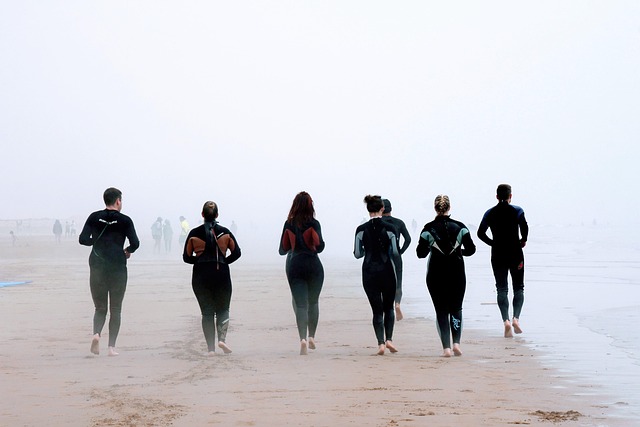Warm-up and cool-down exercises play a big role in preparing your body for a hockey game and in speeding up recovery afterwards. I always emphasize that spending time on these routines can make a real difference in performance and reduce the chance of injuries. A good warm-up helps increase blood flow and improves flexibility, while a proper cool-down helps your muscles recover and reduces stiffness after the game. This article goes over a variety of warm-up and cool-down exercises along with tips that beginners can easily follow at home or pre-game.

The Importance of Warm-Up and Cool-Down Exercises
Hockey is physically demanding and often involves quick changes in direction, abrupt stops, and intense bursts of speed. For these reasons, your muscles and joints need to be prepared for the activity ahead. A warm-up increases your heart rate and prepares your muscles by gently stretching them. When your body is properly warmed up, you’re less likely to experience strains or pulls during the game.
After the game, cooling down is equally important. It gives your heart rate a chance to slowly return to normal, helps flush out any lactic acid that builds up in your muscles, and stretches out any tight areas that may have been overlooked during the game. Taking care of your body after a high-intensity effort is essential. Both warm-up and cool-down routines work to protect your body, improve performance, and ensure that you remain healthy as you enjoy the sport.
Including these routines in your practice is something I recommend to every player, especially beginners who are still learning how their bodies respond to hockey’s physical challenges. Experimenting with different exercises can help you find what works best for your own body and playing style.
Getting Started with At-Home Warm-Up Exercises
If you’re new to the sport or just looking for a way to integrate warm-up routines into your training, there are plenty of exercises you can perform at home. The idea is to gradually raise your heart rate and loosen up your muscles without overexerting them before you get into game mode.
One simple way to start is with light aerobic activities. I often suggest jogging in place or doing jump rope for about five to ten minutes. These exercises help get your blood circulating and gently wake up your muscles.
Another important area to focus on is dynamic stretching. Unlike static stretches where you hold a position for a period of time, dynamic stretches involve movement. They are excellent for targeting multiple muscle groups. Here are a few exercises that are good for beginners:
- Leg Swings: Stand on one leg and gently swing the other leg forward and back. This helps loosen up your hip flexors and hamstrings.
- Arm Circles: With your arms extended to the sides, perform circles that start small and gradually become larger. This readies your shoulders and arms for swift movements on the ice.
- Torso Twists: With your feet shoulder-width apart, twist your upper body from side to side. This exercise targets your core and helps keep your back flexible.
Such exercises at home build a routine you can rely on every game day. On days when you have limited time, these activities can quickly fill in the gap and ensure your body is ready to hit the rink.
Pre-Game Warm-Up Exercises and Stretches
When you are at the rink or on the practice ice, the warm-up routine needs to be more focused. Before stepping into the full game, a series of specific warm-up stretches helps engage the key muscles used during play. While including at-home warm-ups is beneficial, additional exercises at the rink allow you to connect with the playing surface and fine-tune your movements.
Below are some exercises and stretches that I find helpful before the game begins:
- Light Skating Drills: Spend a few minutes skating at a moderate pace. Performing short bursts of speed can help your body transition into the intensity level required for game play.
- Dynamic Leg Stretches: Execute lunges with a twist or walking lunges across the ice. These stretches target your quadriceps, hamstrings, and glutes. They prime your legs for the quick starts and stops typical in hockey games.
- Upper Body Mobility: Use arm circles and gentle torso rotations to warm up your upper body. Hockey requires coordinated movements from both the upper and lower body, so don’t neglect these muscles.
- Controlled Plyometrics: If you’re comfortable, add a few light plyometric exercises such as side-to-side hops. These can help improve balance and prepare your muscles for sudden lateral movements.
- Stick Handling Drills: Incorporate stick handling into your warm-up. Dribbling the puck or performing quick passes against a wall can help sync your coordination with muscle activation.
These pre-game activities not only warm up your muscles but also help sharpen your focus for the competitive moments ahead. By emphasizing both physical and mental alertness, you create a solid foundation for boosting your hockey skills.
Choosing the Right Warm-Up Clothing
The clothes you wear can also affect your warm-up and overall performance. Wearing the right gear helps your body stay warm, supports muscle activity, and gives you an advantage as you begin your training session. Comfort is key because the last thing you want is to be distracted by your outfit.
When deciding on warm-up attire, consider these factors:
- Breathable Fabric: Choose lightweight and breathable materials like moisture-wicking fabrics. They help move sweat away from your skin, keeping you comfortable as your body warms up. These fabrics are especially useful during intense sessions.
- Layering Options: Weather conditions can vary. It’s wise to wear layers so you can remove a piece if the temperature rises too quickly. For example, a breathable base layer paired with a light jacket is common for many hockey players during warm-ups.
- Flexible Wear: Your clothing should support a full range of motion. Loose, non-restrictive fabrics allow you to perform dynamic stretches and movements without feeling confined.
- Comfort Over Style: While trendy sportswear can be appealing, focus on garments engineered for athletic performance. This ensures you are prepared for the upcoming physical demands without discomfort or distraction.
Choosing proper warm-up attire isn’t a trivial decision. It sets the stage for your training session and overall performance on the rink. I always encourage testing different layering combinations during practice to see which ones help you perform at your best.
Cool-Down Exercises to Step Up Recovery
After a high-energy game or training session, it’s important to let your body ease back into a state of rest. Cooling down gives you a chance to relax your muscles and reduce the build-up of lactic acid. This process is key to recovery and can help lessen muscle soreness in the days following a tough match.
Cool-down sessions should be gentle and focused on gradually lowering your heart rate. A slow walk on the ice or around the rink is a great way to start. Following this, static stretching for the legs, back, and shoulders can help release tension built up during play.
Below are some cool-down exercises recommended for hockey players:
- Walking or Light Skating: Spend about five minutes moving at a slow pace. This gentle activity gives your cardiovascular system a chance to return to its normal rhythm.
- Static Stretching: Include stretches for major muscle groups. For the legs, consider seated hamstring stretches or standing quad stretches. For the upper body, gentle stretches of the arms and shoulders help alleviate tightness from holding a stick for extended periods.
- Deep Breathing: Incorporate slow and controlled breathing exercises to help relax your entire body. Deep breathing can relax your muscles and clear your mind after an intense session.
- Foam Rolling: Using a foam roller on your legs can help release muscle tension and improve circulation. Foam rolling is a simple way to target specific muscles that may have become tight during play.
Maintaining a cool-down routine is very important after each session. It not only helps with pain relief but also enhances muscle flexibility and overall performance over time. A consistent cool-down practice can be very helpful in maintaining a healthy physical routine and speeding up recovery after vigorous activity.
Additional Considerations for a Balanced Routine
While warm-up and cool-down exercises are essential, there are additional factors that may improve your overall training experience. Paying attention to the duration and intensity of these exercises is very important.
Balance your warm-up routine by devoting sufficient time to dynamic stretches and light aerobic activities. Performing too many static stretches before play might leave your muscles feeling slack. Instead, reserve those static stretches for your cool-down routine once the high-intensity action is over. This balance helps keep your body agile and ready to perform at its best when game time arrives.
Hydration is another area that often goes overlooked. Even before warming up, make sure you are well hydrated. Drinking water throughout the day and having a sip before you begin ensures that your muscles receive the necessary fluids to stay flexible and perform properly. After the game, staying hydrated continues to boost the recovery process.
Finally, taking a few minutes for mental relaxation can also be beneficial. Whether it means engaging in brief meditation or simply taking quiet time to focus, these moments help reduce anxiety and make you more aware of your body’s needs. Combining both physical and mental preparation builds a solid foundation for ongoing improvement in your hockey performance.
Extra Tips for Performance and Recovery
In addition to the routines already mentioned, there are extra tips that can really give a boost to your training and recovery regimen. First, consider incorporating a variety of exercises into your routine so your body rarely feels bored. Mixing in balance drills, core strengthening, and even some light resistance training can provide next-level cool variety to your sessions.
Another very important tip is to pay attention to your body’s signals. Sometimes, even after a proper cool-down, you might feel residual tightness or fatigue. In these situations, taking additional time to stretch or enjoy a gentle massage can make a real difference in how quickly you bounce back. It is also worthwhile to explore nutrition strategies post-game—eating a balanced mix of carbohydrates, proteins, and healthy fats can help refuel your muscles and prepare them for the next session.
Moreover, integrating a regular schedule that alternates high-intensity sessions with lighter recovery days can contribute significantly to long-term performance. Giving yourself time to recover fully not only prevents injuries but also ensures that each game or training session (affiliate link) feels fresh and energetic. Listening to your body and adjusting intensity accordingly is key. Remember, progress in sports is a balanced mix of pushing your limits and knowing when to step back and recover.
Conclusion
The routines you adopt for warm-up and cool-down play a big role in both your performance and overall health on the hockey rink. Taking the time to prepare your body through dynamic and controlled exercises is an investment that pays off by reducing injuries and boosting flexibility. Cooling down properly after intense training or a game helps maintain muscle balance and eases recovery.
Having structured routines is not about adding extra steps. It is about ensuring consistent performance and long-term care for your body. Whether you’re a beginner starting with simple at-home exercises or a seasoned player fine-tuning your pre-game drills, integrating these practices into your schedule can offer noticeable benefits. Quality warm-ups set the stage for athletic performance. Effective cool-downs help maintain readiness for the next session.
I encourage everyone, from novices to veteran hockey players, to put these exercises into practice. With a balanced approach that includes the right attire, proper physical routines, and attention to recovery, you can improve your stamina, reduce the risk of injuries, and enjoy the sport even more. Keep experimenting and adjusting your routines until you find the perfect mix that suits your body and style of play. Your commitment to these exercises will shine through during every game.
Hockey players are stronger, quicker, and more agile than ever before. To compete and win in today’s game requires superior stamina and strength. Complete Conditioning for Hockey can help get you there with a year-round training plan that will get you primed for a winning season. Check it out here!
“For the sake of transparency, our website contains affiliate links. This means if you click and make a purchase, we may receive a small commission. Don’t worry, there’s no extra cost to you. It’s a simple way you can support our mission to bring you quality ice hockey content.”

